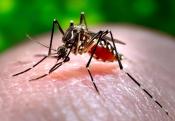Health Alerts & Coronavirus Updates
HEALTH ALERT:
11/4/2021 - NHDES Issues New Fish Consumption Advisories for 5 Lakes in Southern New Hampshire. Elevated Levels of Perfluorooctane Sulfonic Acid (PFOS) Detected in Fish Tissue.
Click HERE for complete details.
Novel Coronavirus State Launches 2-1-1 COVID-19 Hotline:
3/12/2020 - Governor Chris Sununu, the New Hampshire Department of Health and Human Services, and NH Homeland Security and Emergency Management, announced that 211NH has been mobilized to handle all COVID-19 related calls from New Hampshire residents. All residents with questions or concerns surrounding the COVID-19 outbreak can call 2-1-1.
211 NH is the connection for New Hampshire residents to the most up to date resources you need from specially trained Information and Referral Specialists who can provide you with health and human service information you may need to get help, give help or discover options. 211 NH is available 24/7/365. To reach 211 NH please utilize the following options:
• Phone: Dial 211 or 866-444-4211
• TTY Number: 603-634-3388
• www.211nh.org
• Mail: 211 New Hampshire PO Box 211 Manchester, NH 03105
COVID-19 Vaccines Are Available in Hudson Pharmacies:
The CDC recommends everyone ages 5 years and older get a COVID-19 vaccine to help protect against COVID-19
Information and Figures:
Current Numbers : For the must up-to-date information, please refer to the COVID-19 Dashboard provided by the Center for Systems Science and Engineering (CSSE) at John's Hopkins University (JHU) and the New Hampshire COVID-19 Response Dashboard. Links to both sites can be found in the Web Links section at the bottom of this page.
nh community-based covid-19 testing options
This interactive map from the NH DHHS provides information on PCR testing locations throughout the state. The Rapid Antigen test is now available at most pharmacies with results in 15-30 minutes.
View the map HERE.
Watch for Symptoms:
Reported illnesses have ranged from mild symptoms to severe illness and death for confirmed coronavirus disease 2019 (COVID-19) cases.
The following symptoms may appear 2-14 days after exposure.
- Fever
- Cough
- Body Aches
- Headache
- Exhaustion
- Shortness of breath
STAY HOME IF YOU ARE SICK!
Call your doctor if you…
- Develop symptoms, and have been in close contact with a person known to have COVID-19
OR
- Have recently traveled from an area with widespread or ongoing community spread of COVID-19.
This is a rapidly evolving situation and new information is becoming available daily. Testing for COVID-19 no longer requires a physician authorization. Additionally, many drive-thru pharmacies conduct testing at their locations. Rapid antigen COVID testing is done at the local level and the State conducts confirmatory testing with the PCR test.
You can get a COVID Testing Registration Form at: https://business.nh.gov/DOS_COVID19Testing/
multi-system inflammatory syndrome in children
Multisystem inflammatory syndrome in children (MIS-C) is a condition where different body parts can become inflamed, including the heart, lungs, kidneys, brain, skin, eyes, or gastrointestinal organs. Children with MIS-C may have a fever and various symptoms, including abdominal (gut) pain, vomiting, diarrhea, neck pain, rash, bloodshot eyes, or feeling extra tired.

- Wash your hands often with soap and water for at least 20 seconds. Use an alcohol-based hand sanitizer if soap and water are not available.
- Avoid touching your eyes, nose, or mouth.
- Avoid close contact with people who are sick.
- Stay home when you are sick.
- Cover your cough or sneeze with a tissue, then throw the tissue in the trash.
- Clean and disinfect frequently touched objects and surfaces using a regular household cleaning spray or wipe.
- Practice other good health habits. Get plenty of sleep, be physically active, manage your stress, drink plenty of fluids, and eat nutritious food.
This is a rapidly evolving situation and new information is becoming available daily. Testing for COVID-19 typically requires a physician authorization. Please refer to the links below for additional information.
- NH COVID-19 RESPONSE: https://www.covid19.nh.gov/
- CDC Coronavirus Page: https://www.cdc.gov/coronavirus/2019-ncov/index.html
- Protect Yourself and Your Family: https://www.cdc.gov/coronavirus/2019-ncov/prevent-getting-sick/prevention.html
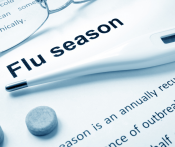
Difference Between Flu and COVID-19
Please view the following link: https://www.cdc.gov/flu/symptoms/flu-vs-covid19.htm
Flu Season
Anyone can get the flu, but those younger than 5 years of age or older than 65 are at a higher risk of additional complications like pneumonia.
CDC reports the number of flu cases this past season was minimal. The overwhelming focus on COVID-19 reduced the focus on flu and flu testing. Also, hygiene controls for COVID - masks, hand washing, social distancing were effective for the prevention of flu and many other viral diseases.
There are 4 FDA-approved influenza antiviral medications effective against 99% of last year’s viruses. These meds must be taken within the first 48 hrs of symptoms to reduce severity and duration symptoms. Side effects should be reviewed with your doctor. Flu vaccines are already available for this flu season and CDC highly recommends a flu vaccine this year due to the coronavirus pandemic.
Getting a flu vaccine will not protect against COVID-19, however flu vaccination has many other important benefits. Flu vaccines have been shown to reduce the risk of flu illness, hospitalization and death. Getting a flu vaccine this fall will be more important than ever, not only to reduce your risk from flu but also to help conserve potentially scarce health care resources.
Although not everyone who has the flu will have a fever, symptoms usually come on suddenly and people who have the flu will often feel some or all of these symptoms:
- Fever
- Cough
- Sore Throat
- Runny or Stuffy Nose
- Body Aches
- Headache
- Chills
- Fatigue
- Sometimes diarrhea and vomiting
Talk with your doctor to see which vaccine is right for you.
It is never too late in the season to get a flu shot. Flu vaccines and COVID-19 vaccines can be given at the same time.
For Questions & Answers about the Flu and COVID-19, please see the link below:
https://www.cdc.gov/flu/season/faq-flu-season-2021-2022.htm
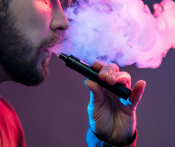
National Investigation into Unexplained Vaping-Associated Pulmonary Illness
According to the Centers for Disease Control and Prevention (CDC), as of February 18, 2020, 2,807 cases of e-cigarette, or vaping product use associated lung injury (EVALI) have been reported to CDC from 50 states. Sixty eight deaths in 29 states are reported. The median age of deceased patients was 49.5 years and ranged from 15 to 75 years. More deaths are currently under investigation.
Among 2,668 patients with data, 76% of patients are under 35 years old. 37% of patients are 18 to 24 years old and 24% of patients are 25 to 34 years old. Among 2,022 patients with information on substances used in e-cigarette, or vaping, products in the 3 months prior to symptom onset, about 82% reported using THC-containing products and about 57% reported using nicotine-containing products.
What is New?
Recent CDC laboratory testing of bronchoalveolar lavage (BAL) fluid samples (or samples of fluid collected from the lungs) from 29 patients with EVALI submitted to CDC from 10 states found vitamin E acetate in all of the BAL fluid samples. Vitamin E acetate is used as an additive in the production of e-cigarette, or vaping, products. This is the first time that we have detected a potential chemical of concern in biologic samples from patients with these lung injuries.
CDC continues to recommend that people should not use e-cigarette, or vaping, products that contain THC, particularly from informal sources like friends, or family, or in-person or online dealers. We will continue to provide updates as more data become available.
E-cigarette Use Among Middle and High School Students — United States, 2020
The use of any tobacco product by youths is unsafe, including electronic cigarettes (e-cigarettes) (1). Most e-cigarettes contain nicotine, which is highly addictive, can harm the developing adolescent brain, and can increase risk for future addiction to other drugs (1). E-cigarette use has increased considerably among U.S. youths since 2011 (1,2). Multiple factors have contributed to this increase, including youth-appealing flavors and product innovations (1–3). Amid the widespread use of e-cigarettes and popularity of certain products among youths, on February 6, 2020, the Food and Drug Administration (FDA) implemented a policy prioritizing enforcement against the manufacture, distribution, and sale of certain unauthorized flavored prefilled pod or cartridge-based e-cigarettes (excluding tobacco or menthol). During September 2014–May 2020, e-cigarette sales increased by 122.2%.
In 2020, 19.6% of high school students (3.02 million) and 4.7% of middle school students (550,000) reported current e-cigarette use. Among current e-cigarette users, 38.9% of high school students and 20.0% of middle school students reported using e-cigarettes on 20 or more of the past 30 days; 22.5% of high school users and 9.4% of middle school users reported daily use. Among all current e-cigarette users, 82.9% used flavored e-cigarettes, including 84.7% of high school users (2.53 million) and 73.9% of middle school users (400,000).
For additional information:
- What are E-Cigarettes? https://www.cdc.gov/tobacco/basic_information/e-cigarettes/pdfs/ecigarette-or-vaping-products-visual-dictionary-508.pdf
- CDS Smoking & tobacco Use: https://www.cdc.gov/tobacco
- CDC Basic Information: https://www.cdc.gov/tobacco/basic_information/e-cigarettes/severe-lung-disease.html
- Get the facts: https://www.cdc.gov/tobacco/basic_information/e-cigarettes/index.htm
- Bottom Line about Electronic Cigarettes: https://www.cdc.gov/tobacco/basic_information/e-cigarettes/about-e-cigarettes.html
- Bottom Line on the risks: https://www.cdc.gov/tobacco/basic_information/e-cigarettes/Quick-Facts-on-the-Risks-of-E-cigarettes-for-Kids-Teens-and-Young-Adults.html
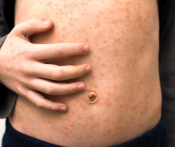
Measles
Measles is a vaccine-preventable communicable disease.
For 2020: As of April 5, 2020, there have been 12 confirmed cases of measles in 7 states. Measles is a reportable disease in New Hampshire to the NH Department of Health & Human Services at 603-271-4496. Ensure you are vaccinated against measles before traveling internationally. This highly contagious virus can live for 2 hours in the air where an infected person was.
For 2019: There were 1,282 cases of measles, in 22 outbreaks identified in 31 states, including New Hampshire. This is the most since 1992. 128 were hospitalized and 61 had complications of pneumonia and encephalitis. 89% were unvaccinated. Although measles were eradicated from the U.S. in 2000, a new surge in cases is due to unvaccinated populations.
The World Health Organization and CDC reported 140,000 deaths in 2018.
View the NH Dept of Health & Human Service Fact Sheet:
To view the fact sheet, click HERE
Information on the CDC Vaccination Recommendations:
- https://www.cdc.gov/vaccines/vpd/measles/index.html
- https://www.cdc.gov/measles/plan-for-travel.html

Hepatitis A
Hepatitis A is a vaccine-preventable communicable disease.
View the NH Department of Health & Human Services Fact Sheet
To view the fact sheet, click HERE
Information from the Centers for Disease Control (CDC):
Information on the CDC Vaccination Recommendations:
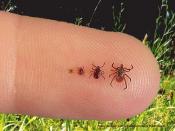
Four Tick Transmitted Diseases in New Hampshire
Lyme and other tickborne diseases are spread to humans and animals by the bite of an infected tick. In New Hampshire, Lyme disease is the most commonly reported tickborne disease.
Please refer to the following links for additional information:
- Tick Bite Facts: https://www.dhhs.nh.gov/sites/g/files/ehbemt476/files/documents/2021-11/tickbitesFS.pdf
- Removing a tick (document): https://www.cdc.gov/ticks/removing_a_tick.html
- Removing a tick (video): https://www.youtube.com/watch?v=oGrK4ZKUfhQ
- Lyme Disease Fact Sheet: https://www.dhhs.nh.gov/sites/g/files/ehbemt476/files/documents/2021-12/lymefs.pdf
- CDC - Ticks: https://www.cdc.gov/ticks/index.html

